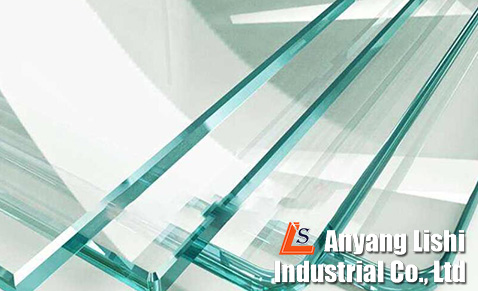
Glass and Glass Fibers, although sharing a common origin, are distinct materials with diverse properties and applications. Understanding their differences is essential for appreciating the vast range of products and technologies they contribute to in various industries.
Glass: Glass is primarily composed of silica (sand), soda ash, and limestone. The raw materials undergo a melting process, and the molten glass is then shaped and cooled to form the final product. This versatile material is known for its transparency, hardness, and brittleness.

Glass Fibers: Glass fibers are a specific form of glass that is produced by extruding molten glass through tiny openings, creating thin strands. This process imparts unique properties to the fibers, making them suitable for reinforcement and various applications.

Glass: Solid and typically transparent or translucent, glass possesses characteristics such as hardness, smoothness, and the ability to transmit light. It can be molded into various shapes, making it adaptable for applications like windows, containers, and decorative items.
Glass Fibers: Glass fibers are characterized by their thin, flexible strands. They exhibit high tensile strength, resistance to heat, and can be woven into fabrics or mats. These fibers are integral components in composite materials.
Construction: Glass is extensively used in construction for windows, doors, and architectural elements. Its transparency allows natural light to enter buildings while providing a barrier against the elements.
Containers and Tableware: Glass containers, bottles, and tableware are common everyday items. Glass’s inert nature makes it an ideal material for storing and preserving various substances.
Composite Materials: One of the primary applications of glass fibers is in the production of composite materials. They are used to reinforce plastics, resins, or concrete, creating lightweight yet strong materials for industries such as automotive, aerospace, and construction.
Insulation: Glass fibers are essential in thermal and electrical insulation materials. They provide effective insulation in buildings, appliances, and electronic devices, contributing to energy efficiency and safety.
Automotive Components: Glass fibers enhance the mechanical properties of automotive components, contributing to lightweight construction and improved fuel efficiency.
Glass: While glass is hard and durable, it is relatively brittle and may break upon impact. The strength of traditional glass can be enhanced through processes like tempering or laminating.
Glass Fibers: Glass fibers, on the other hand, are known for their high tensile strength and flexibility. They exhibit excellent resistance to breaking and are commonly used to reinforce materials where strength is a critical factor.
Glass: Traditional glass is not an effective electrical insulator. It can conduct electricity, limiting its use in electronic applications. Moreover, its thermal insulation properties are limited.
Glass Fibers: Glass fibers, when used in insulation materials, provide excellent electrical insulation and thermal resistance. This makes them valuable in electronic components and building insulation.
Glass: Innovations in glass technology include the development of smart glass, which can change its transparency based on external conditions. This has applications in energy-efficient building design and automotive industries.
Glass Fibers: Ongoing research focuses on optimizing the properties of glass fibers, making them even more lightweight and durable. Advances in nanotechnology may further enhance their performance in various applications.
Glass: Glass is recyclable, contributing to sustainable practices. Recycling glass reduces the energy required for manufacturing new glass products.
Glass Fibers: While glass fibers themselves are not biodegradable, the durability of products they reinforce, such as composite materials, can contribute to longer product lifecycles and reduced environmental impact.
In conclusion, while glass and glass fibers share a common origin, their distinct properties lead to diverse applications in numerous industries. Glass, with its transparency and versatility, is omnipresent in our daily lives, from architectural structures to household items. Glass fibers, with their strength and flexibility, have revolutionized industries by reinforcing materials, enhancing thermal and electrical insulation, and contributing to the development of advanced composite materials. Both materials continue to evolve, driven by innovation and the pursuit of more sustainable and efficient solutions in an ever-changing technological landscape.

Whether you have questions or you would just like to say hello,Contact us!
Call Anytime:
+86 15837207537Send E-mail:
info@lsakminerals.comAddress:
Anyang City , Henan Province, China.